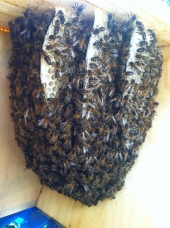









Hives, Supplies and Classes - http://www.beethinking.com










































 He said they were africanized and aggressive and chased him, but we had been up close several times with no problems. I even lifted my kids up to look nose-into the tree hole once! Best wishes for your bees, chickens, ducks, and little boys!
He said they were africanized and aggressive and chased him, but we had been up close several times with no problems. I even lifted my kids up to look nose-into the tree hole once! Best wishes for your bees, chickens, ducks, and little boys! 




Kerry Rodgers wrote:Hi David...
....could you please spell out what you mean by "when there is a nectar flow", in the context of suburbs?

|
I've been selected to go to the moon! All thanks to this tiny ad:
montana community seeking 20 people who are gardeners or want to be gardeners
https://permies.com/t/359868/montana-community-seeking-people-gardeners
|


